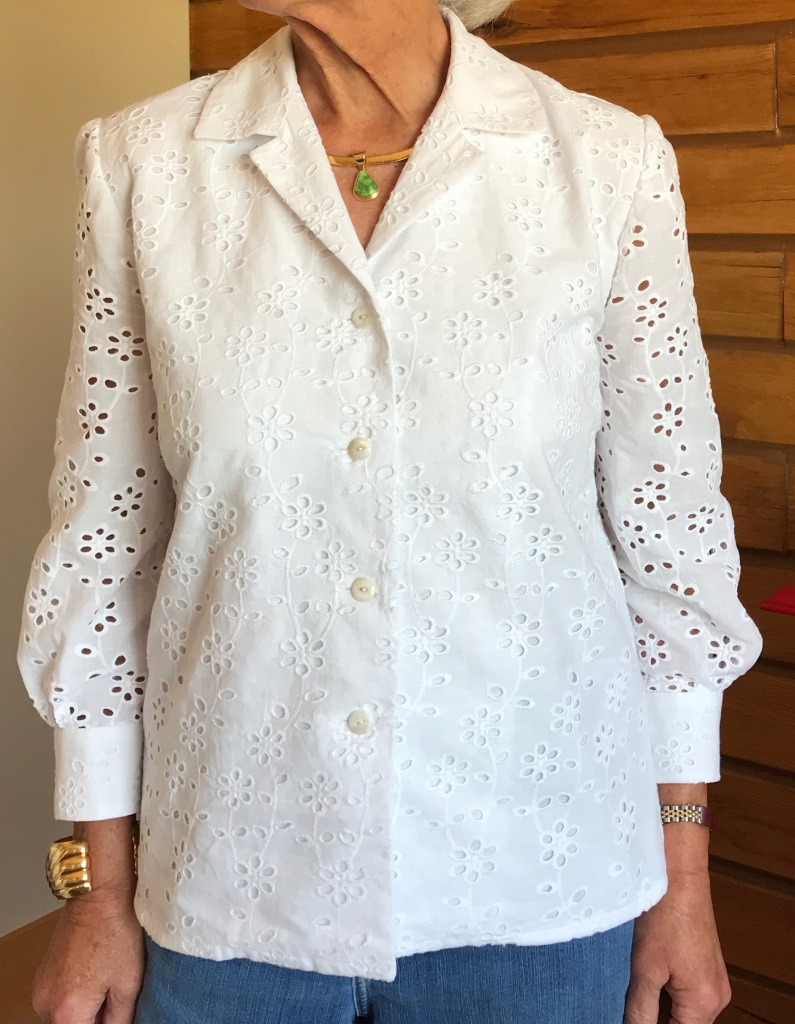Eyelet is one of those fabrics which can conjure up memories from one’s life. So often associated with pinafores, eyelet is lovely for little girls’ dresses – and petticoats. It is often used for lingerie or sleepwear for all ages, as well as dresses and blouses. It is a summer fabric, with its “built-in” air conditioning – ie. all those little holes surrounded by embroidery. Often eyelet trim – and sometimes eyelet yard goods – have one or two finished borders. Such was the case with the eyelet I found earlier this year for the ruffled collars for sundresses for my granddaughters.

It was working on those collars which convinced me I needed to make an eyelet bouse for myself. I went back to Farmhouse Fabrics, from which I had purchased the double-sided eyelet panel for those collars, to find a suitable eyelet for a blouse. Farmhouse Fabrics has quite an inventory of lovely eyelets, so it was difficult to decide. But decide I did, and purchased this all-cotton eyelet made in Spain.
For a pattern I used this vintage Vogue pattern from 1957.
I liked the convertible collar of this pattern, as shown in View B. A convertible collar is one which can be worn open or closed. The collar is sewn directly to the neckline. I did, however, shorten the sleeves to below elbow-length. I also chose to make plain, buttoned cuffs without the extra turn-back detail.
Although the blouse is described on the pattern envelope as “tuck-in,” I liked the gently curved and split hem which would also allow me to wear the blouse as an over-blouse. The thumbnail detail from the pattern envelope shows the curved hem.
I lined the main body of the blouse with white cotton batiste, leaving the sleeves unlined. To reduce bulk, I made the undercollar and the cuff facings from the white batiste.
Buttons are always a favorite component of a blouse for me. I had a card of vintage Lady Washington Pearls which seemed a lovely complement to the scale of the fabric embroidery.
I first wore this blouse on a very warm evening to attend an outdoor concert. I was amazed at how cool the blouse was. The little breeze there was, did indeed feel like air-conditioning as it wafted through all those embroidered holes!



Finding beautiful eyelet fabric is now on my sewing radar. I would like to make more with this timeless, feminine and versatile type of lace.








































